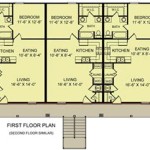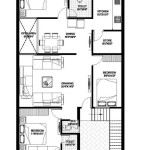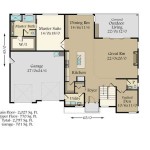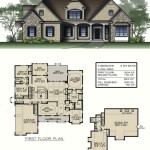Accessory Dwelling Unit Floor Plans: A Comprehensive Guide
Accessory Dwelling Units (ADUs), also known as granny flats or in-law suites, are gaining popularity as an affordable and versatile housing option. With their smaller footprint and often lower cost, ADUs offer a range of advantages for homeowners, families, and communities. This article provides a comprehensive guide to ADU floor plans, exploring various design options, space utilization, and essential considerations.
Types of ADU Floor Plans
ADUs come in a variety of shapes and sizes, each with its own unique floor plan. The most common types include:
- Attached ADUs: Built as an extension to the main house, attached ADUs share a wall or roof with the primary dwelling.
- Detached ADUs: Standalone structures located on the same property as the main house, offering privacy and independence.
- Garage Conversions: Existing garage spaces converted into living spaces, providing affordable and space-saving options.
- Basement ADUs: Located within the basement level of the main house, these ADUs utilize existing square footage for additional space.
Essential Features and Considerations
When designing an ADU floor plan, several essential features and considerations must be taken into account:
- Size: ADUs typically range in size from 300 to 1,200 square feet, depending on the number of occupants and intended use.
- Layout: A well-planned layout optimizes space utilization, ensuring a comfortable and functional living environment.
- Kitchen: A kitchenette or full kitchen is essential for most ADUs, allowing occupants to prepare meals and snacks.
- Bathroom: A full bathroom with a shower or tub, toilet, and sink is a necessity for ADUs.
- Sleeping Areas: Bedrooms or sleeping areas can vary in size and number, depending on the occupants' needs.
- Storage: Ample storage space, such as closets and built-ins, helps to keep the ADU organized and clutter-free.
Space Utilization Techniques
Small spaces require creative solutions to maximize functionality. Space utilization techniques commonly used in ADU floor plans include:
- Multi-Purpose Spaces: Living rooms can double as dining areas or study spaces, while bedrooms can incorporate storage units.
- Vertical Space Utilization: Loft beds, built-in shelves, and vertical storage help to create additional space without increasing the footprint.
- Smart Furniture: Furniture pieces with multiple functions, such as fold-out beds or ottomans with built-in storage, optimize space.
Conclusion
Accessory Dwelling Unit floor plans offer versatile and innovative solutions for affordable housing and extended family accommodations. By considering the essential features and space utilization techniques discussed in this article, homeowners can create functional and comfortable ADUs that enhance the value and livability of their properties.

Adu Plans
Accessory Dwelling Unit Floor Plans Superior Adus

County Standard Adu Plans How To Plan Small House Floor Accessory Dwelling Unit

4 Adu Floor Plans That Will Maximize Your Property Maxable

2 Bedroom 1 Bath Adu Floor Plans 600 Sq Ft Turnkey
Accessory Dwelling Units City Of Stockton

Small House Plans Add Flexibility To Your Home With Adus Houseplans Blog Com

Ok So Whats In A Tiny House Anyway Accessory Dwelli Dwelling Unit Floor Plans Small

How To Build An Adu Free Consultations
Accessory Dwelling Units City Of Stockton








